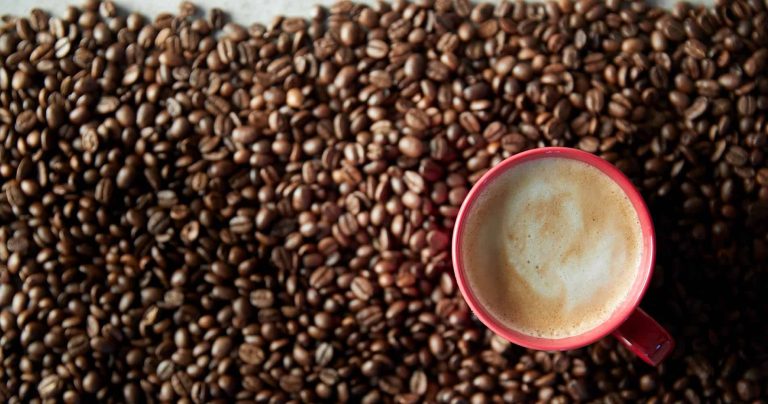The coffee bean journey explained – from crop to cup
Alex | July 14, 2022

Understand the entire journey of the coffee bean from where it’s grown, the process and how it reaches your office coffee cup in our guide.
How is your morning coffee made? With most coffee grown in South and Central America, the Caribbean, Africa and Asia, it means it takes a fascinating journey to get to your office in the UK. We guide you step-by-step from crop to cup.
Plant
Coffee comes from a fruit called the Coffee Cherry and as it ripens, it changes from green to yellow to red. Like a normal cherry, inside it, there’s a seed. This seed is what goes through the many processes to transform into coffee.
There are two main coffee varieties which are Arabica and Robusta. Arabica offers a wide range of tastes and aromas. It produces more expensive, higher-quality coffee blends. Robusta is affordable and used more in espresso blends and instant coffee. However, both are delicious and it just comes down to your personal preference.
Pick
Depending on the variety, it takes approximately 3 to 4 years for coffee trees to grow and come to fruition. When the coffee cherries turn a deep red, they’re ready to pick, and a coffee harvest takes place either once or twice a year.
Picking selectively by hand means pickers will only choose the ripest of cherries, leaving the others to ripen further. Stripping is an alternative way of harvesting. Stripping either by hand or increasingly, by machine, harvests entire branches. To get a more premium coffee taste, selective picking is the best. It’s a more labour intensive and time-consuming method which consequently is reflected in the higher price.
Sort and process
Sorting the coffee involves removing any poor quality or under-ripe fruits. Processing the coffee simply means removing the pulp to isolate the seed. This is done in two ways -either wet or dry.
The product at this stage is called green coffee which is just regular coffee beans that are unroasted and raw. Exporting the green coffee to various locations across the world takes it to its next stage in production – roasting.
Roast
Roasting in the country of import and consumption keeps the coffee as fresh as possible for longer. Also, roasting provides the coffee’s unique taste and aroma. It’s important to roast to a very specific time and temperature to ensure a smooth taste.
Most roasting machines have a temperature of around 550° F, and there are three predominant types of roast that range from light, medium and dark. Light coffees will be roasted for short amounts of time, and dark roasts, for longer to intensify the taste.
Grind
The grind is next up. The coffee is ground from coarse to fine depending on the brewing method. This process is time sensitive as once ground, the many aromas are immediately released as they react with the air and oxidise. It’s revealed in studies that in only 15 minutes, ground coffee will have lost about 60% of its aroma so if you can, grind your own beans!
Brew and enjoy
Brewing your coffee is the next step in the exciting journey of the coffee bean. Choose from cafetières to percolators to bean-to-cup machines – it’s up to you! If you’re at work, FreshGround’s range of office coffee machines will ensure you get a perfect brewed cup of coffee every time. Each of our drinks recipes is carefully developed by SCA trained specialists with in-depth knowledge of the machines and coffees to give a balanced and beautiful flavour. All you have to do is sit back, and enjoy.
Get in touch to find out more about our coffee machines, or if you’d just like more information about coffee at work.